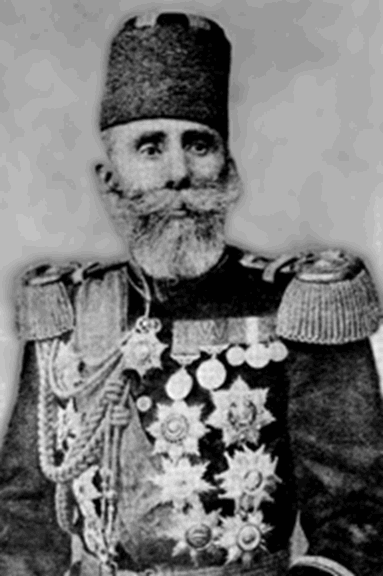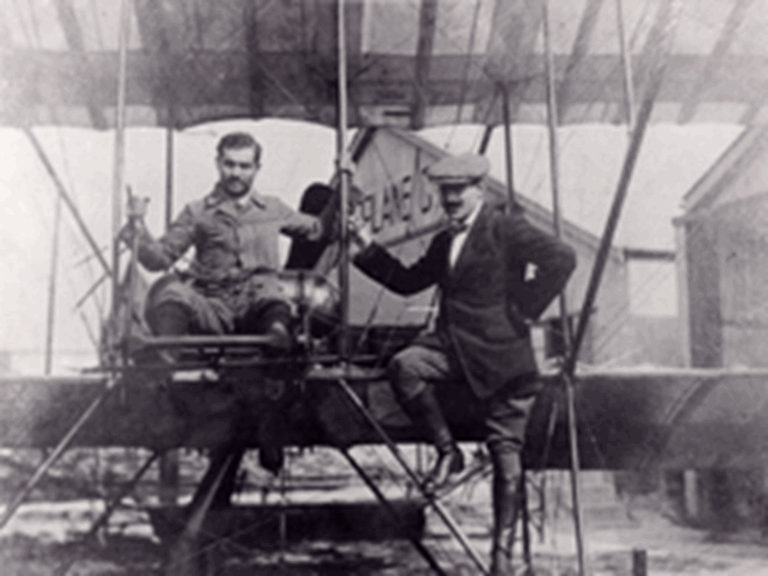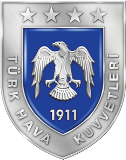
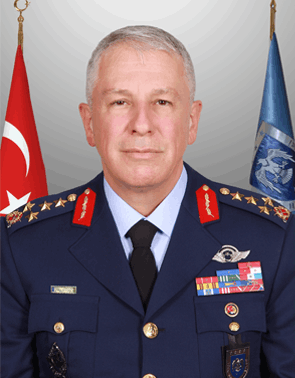
General Ziya Cemal KADIOĞLU
TURKISH AIR FORCE COMMANDER
The Establishment Years
The history of the Turkish Air Force, which is one of the pioneering aviation institutions in the world, dates back to 1909. The first studies related to aviation in the Turkish Military started in 1909, these studies were developed in 1910 and while an inspection council was sent to Europe, a delegation was sent to International Aviation Conference in Paris. Towards the end of 1910 a firm decision was made in the Turkish Military concerning aviation and it was envisaged to send couple of officers to Europe for training in order to raise pilots. However, in spite of the decision which was made in the higher commanding levels of the Turkish Military, the necessary funding could not be found due to the financial difficulties of the country at time and in 1910 the plan was never realized.
Mahmut Şevket Pasha who was the Minister of War at that time foresaw the importance of aviation in terms of national defense, continued to follow the issue closely and with his order it was planned to send two military members abroad for training. Within this scope, in order to choose the personnel to be sent abroad and to conduct the aviation affairs, an aviation commission was established on 01 June 1911. Establishment of this commission constituted the foundation of the Turkish Air Force. On 28 June 1911 a test was given by the Aviation Commission and two personnel, Cavalry Captain Fesa Bey and Engineer 2nd Lt. Yusuf Kenan Bey, received the highest scores and they were both sent to Flight School of Bleriot Factory in France for flight training.
|
Mahmut Şevket Paşa |
Fethi Bey | Eight years after the symbolic flight of the first powered aircraft by Wilbur and Orville Wright Brothers on 17 December 1903, the foundations of the Turkish Air Force Command were laid. Turkish Military aviation organization took its place among the world’s first aviation organizations almost in the same year as the USA, France, the UK, Germany, Italy, Austria and Russia who established their military aviation organizations between 1909 and 1912.
|
1911 - 1918
| On 21 February 1912, Captain Fesa completed his flight training successfully and returned to his country upon being awarded the 780th pilot wings of the French and the 1st pilot wings of the Turkish Army, while Yusuf Kenan Bey returned being awarded the 797th pilot wings of the French. The same year 8 other Turkish officers were sent to France for flight training. Thus, Turkish Army succeeded in having its first pilots and the first aircraft at the beginning of 1912 an on 03 July 1912, together with the opening of the Air School (flight school) in Yeşilköy (İstanbul), The Turkish Army started to train its own pilots at home. | 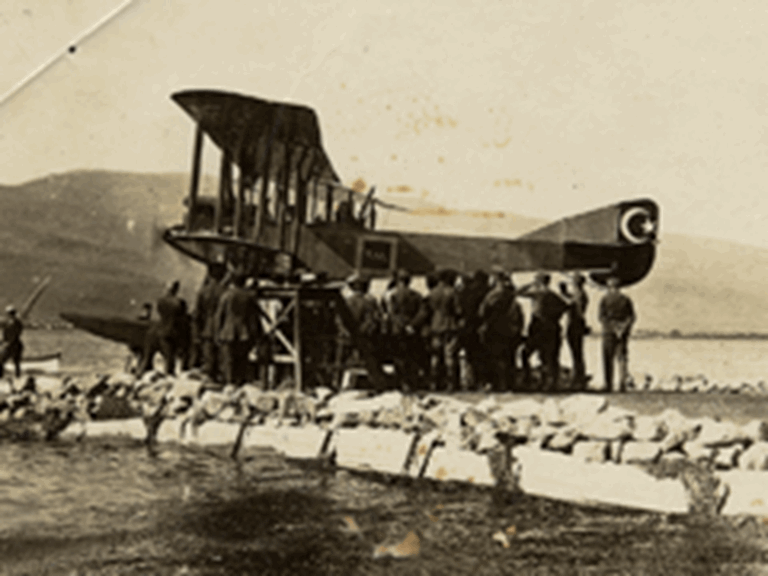 |
Following the opening of the Air School which is one of the most important steps towards the development and strengthening of the Turkish Military aviation, the efforts on aviation accelerated, the number of personnel increased and air companies (aircraft companies) which took active duty during the beginning of the First World War were established.
In the first phase of the 1912-1913 Balkan War, Turkish Aviators having inadequate levels of experience were unable to demonstrate the desired success but in the second phase they obtained great success.
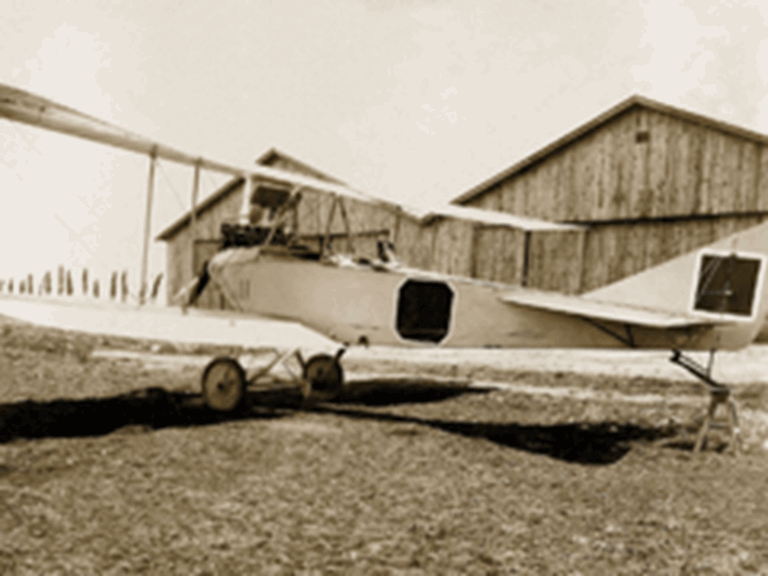 |
Together with the ending of the Balkan War, efforts towards the development and reformation of the Turkish Aviation started. In parallel to these efforts, new aircraft were purchased and in June 1914 the Naval Air School was established in Yeşilköy.
In 1914 The Air Force was taken from the order of the Kıtaat-ı Fenniye and Mevaki-i Müstahkeme Inspectorate and given to the Muhabere and Muvasala Branch and took the name of “Teşkilat-ı Havaiye Inspectorate”. In 1914, the development and reformation efforts stopped with the breaking out of the First World War. Subsequently, in 1915, a group of German and Turkish aviators were exchanged between the two countries for flight training.
|
Due to increasing numbers of aircraft before the end of 1915, the 13th field Air Navigation Branch was established and aviation affairs were transferred to this branch. In November, the 13th Branch was renamed as “The Inspectorate of Aviation”.
On 15 February 1915, along with the Inspectorate, 9th Aviation Affairs Branch was established (aviation affairs) and supply and procurement duties were assigned to this branch.
During this period, The Turkish Air Force was organized as Air School, Air (Aircraft) Stations, Air (Aircraft) Companies, Stationary Balloon Companies, Anti-Aircraft Artillery Units and Meteorology Stations. The Naval Air Companies (Naval Aircraft Companies) and the Naval Air School performed their duties within the organization of the Ministry of Marine.
With a change made on 16 May 1916, the army and naval aviation were united under the authority of the General Headquarters Aviation Affairs Inspectorate and the 9th Aviation Inspectorate. Also, in some of the air (aircraft) companies which constituted the main power of the organization at that time only Turkish aviators were posted whereas in some other companies Turkish and German aviators were posted jointly and tactical command and control of these companies were assigned to the armies of which they were posted.
Turkish Air Force, with the organizational structure mentioned above, combatted in almost all fronts which Turkish soldiers battled during the period of World War 1 within a very large area from Çanakkale to Hejaz and from Caucasia to Palestine.
On 29 July 1918 the name of Aviation Affairs was changed to “Air Force General Inspectorate” and efforts towards reorganization were initiated. But shortly after this date the country, primarily İstanbul, was occupied by the allied powers upon acceptance of the defeat in the First World War by the Ottoman Empire and signing of the Moudhros Armistice on 30 October 1918. A new era started for the Turkish military aviation as of this date.
1918 - 1923
By the implementation of the provisions of the Moudhros Armistice, discharge operations were initiated in the army, German aviators left the country and on 29 July 1918, the Air Force General Inspectorate which was trying to reconstruct itself had no staff and remained as a title on paper. However, with great efforts of the Turkish aviators, air (aircraft) stations İzmir, İstanbul and Konya and air (aircraft) companies in Elazığ and Diyarbakır were tried to be established with the aircraft left after World War I. Meanwhile, the Turkish Independence War started in Anatolia under the leadership of Mustafa Kemal Pasha in order to ensure the freedom of the Turkish Nation and the integrity of the country and Turkish aviators joined the Konya station in Anatolia to take part in this struggle. | 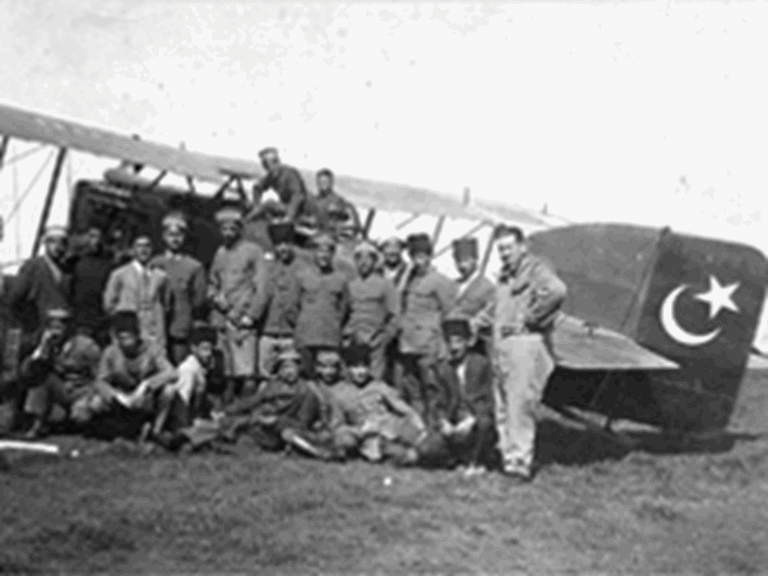 |
As the circumstances were developing like this, the Air Force General Inspectorate was abolished and its personnel were dispersed with the directive of the Ministry of War dated 21 June 1920. Thus, the Turkish Aviation was deprived of its organization, personnel and materials, in other words, the Turkish Aviation in the Ottoman Era came to an end.
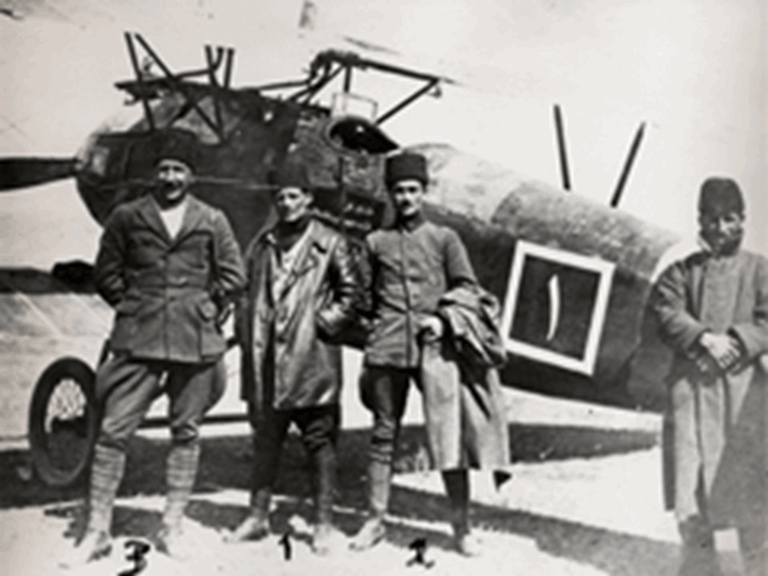 |
After the inauguration of the Turkish Grand National Assembly on 23 April 1920, it was considered essential, in the first place, to establish regular and disciplined armies and parallel with this principle, the Ankara Government with the order of the Ministry of Defense dated 13 June 1920, the Air Force Branch, which was affiliated to the War Office, was established.
Following the activation of the first aviation organization of the new Turkish state, efforts were pursued to repair the damaged and defective aircraft available at hand and to procure the required materials, and the Turkish aviators performed their duties faithfully even under the most stringent conditions by participating in the operations conducted at both eastern and western fronts.
|
On 1 February 1921, an organizational change was made and the name “Air Force Branch” was changed as “Air Force General Directorate”.
Following this, on 5 July 1922, another organizational change was also made and the Air Force General Directorate was replaced by the Air Force Inspectorate which had the authority level of a division.
1923 - 1944
| After the foundation of the Republic of Türkiye on 29 October 1923 by the great leader Atatürk, the whole world recognized the new Turkish State, its independence and integrity. Efforts were pursued to establish a powerful air force to accommodate to the contemporary aviation, and the following were accomplished towards this goal. The strength of the Air Force Directorate which consisted of 3 air (aircraft) companies, 1 naval air (aircraft) company and 1 air school in 1923 was gradually increased so that the number of air companies and naval air companies reached to 10 and 3 respectively. Furthermore, the companies were directed under the jurisdiction of group commands and air (aircraft) station commands. In 1924, personnel were sent to other countries to receive flight training and in 1925, the air school was reestablished in Eskişehir and the first students graduated in October the same year. | 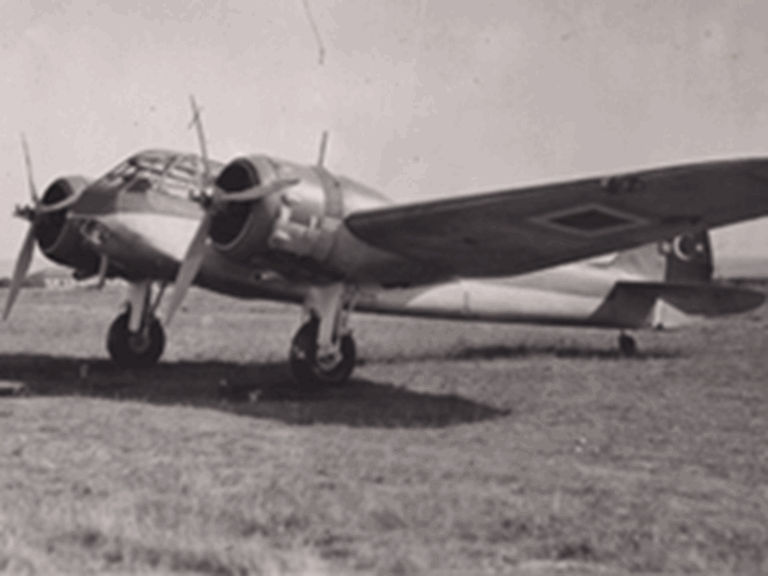 |
In 1928, the Air Force Inspectorate was abolished and the Air Under-Secretariat was established within the structure of the Ministry of Defense. Likewise, the group and air (aircraft) station commands were also abolished and air (aircraft) battalions were established. The abovementioned air units were affiliated to the Turkish General Staff for operations and training and to Air Under-Secretariat for logistics support. In the same year, the aviation personnel with specialties and branches other than pilots were trained in the schools established to meet the arising requirements.
In addition, personnel were also sent to Italy and the USA for training in 1930. In 1932, air (aircraft) regiments were established. The Turkish aviators began to wear blue uniforms as a symbol of aviation starting from 1933. Air Force Academy was inaugurated in 1937 and on 22 May 1939 air brigades were established.
In 1940, Turkish Air Force, having close to 500 aircraft in its inventory became the most powerful air force of the Balkans and was always maintained in a ready status during the Second World War against a possible conflict. On 16 August 1943, air brigades were upgraded to division level and called “air divisions”.
Air Force After 1944
1944, it was decided that all air units, which were within the structure of the Ministry of Defense for logistics support and General Staff for training and operations since 1940, be combined under a single command and for this purpose with the order of the General Staff on 23 January 1944 The Air Force Command was structured as a separate command. In the organization of the Turkish Air Force, only the combatant air units were affiliated to the command while logistics support units and training establishments were left within the structures of the Ministry of Defense and General Staff respectively. The first commander of the Turkish Air Force after getting the name Air Force Command was Lieutenant Zeki DOĞAN who was appointed to the office with the Presidential Decree numbered 18452 on 27 January 1944.
The Air Force Command was upgraded to army level in 1947 and logistics support establishments and all air units/establishments other than Air War (Staff) College were affiliated to the Air Force Command in 1948 and 1950, respectively. | 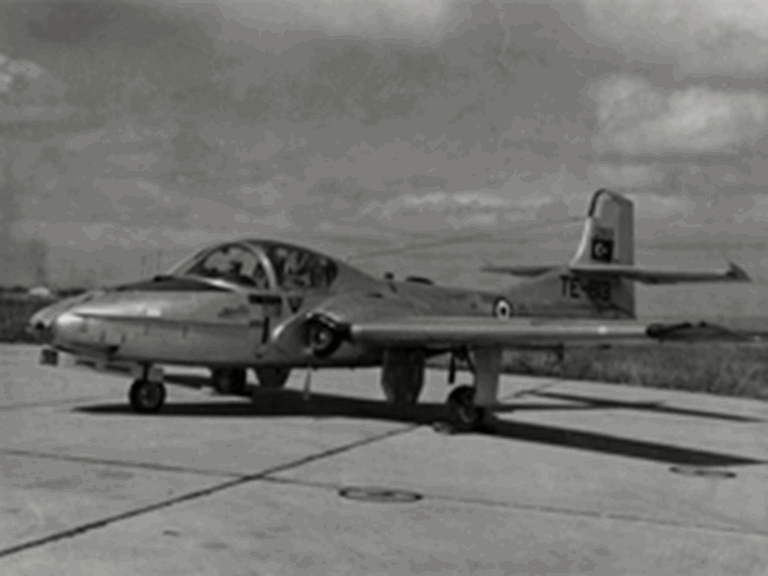 |
Subsequently, in parallel with the developing aviation technology, schools opened at various times to train aviation personnel on specialties and branches other than pilots, were gathered under a single command in 1950 and for this purpose the Air Technical School was established.
In addition to the abovementioned subjects, an important development also occurred in 1950 about aircraft types in the inventory of the Air Force and a decision was made to procure jet aircraft. Therefore, eight aviators were sent to the USA on 15 October 1950 to receive jet training and upon their completion of the training in the USA and returning to the country on 31 August 1951, they were assigned as instructors in orientation training for jet aircraft.
In the same year, the establishment of bases and squadrons was initiated, and the 9th Jet Base Command established in Balıkesir became the first jet base of the Turkish Air Force while the 191st, 192nd and the 193rd squadrons became the first jet squadrons.
After Türkiye’s integration into NATO in 1952, transition to jet aircraft gained speed and propeller driven aircraft were gradually staged out. In June 1962, air divisions were upgraded to corps level and took the name of Tactical Air Force.
On 30 August 1956 the Army Corps Air Training Command was established and all units and institutions regarding the training of air force personnel were gathered under the jurisdiction of this command. In 1957, it was named Air Training Command. Since the day it was established until the transition to jet aircraft in 1951, the training and proficiency level of the Turkish Air Force personnel was increased and maintained to level required by the modern age. This characteristic of the Turkish Air Force personnel continued even after the transition to the jet aircraft and became a source of pride.
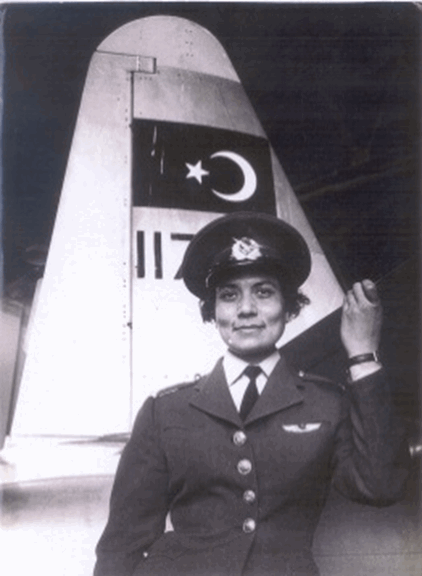 |
Pilot Colonel Leman BOZKURT ALTINÇEKİÇ was born on 1 November 1932 in Kars. She completed her primary and middle school education in in Kars and her high school in İstanbul Atatürk Girl’s High School and she entered the Air War School in 1955 and graduated in 1957 as a Second Lieutenant. She completed her pilots training in İzmir Flight Group between 1957-1958 and in Eskişehir Jet Training Squadron between 1958-1959. She served in various units and headquarters of the Turkish Air Force and she retired on 18 March 1987. Colonel Leman BOZKURT ALTINÇEKİÇ was married and had to children and she passed away on 4 May 2001.
In the abovementioned period, some important events which will give an idea of the level of training and proficiency of the Turkish Air Force personnel are as follows: two championships in international military pentathlon flight rally both in 1954 and in 1955 and hence winning the Challenge Cup; first place in Best hit air gunnery race in1971 and air gunnery race in1955 performed in NATO’s Southeastern Region; second place in Best Hit air gunnery race in 1972; championships in air gunnery race in 1973 and military pentathlon race in 1975; and finally the achievements of the Turkish Air Force during the Cyprus intervention in 1974. |
Turkish Air Force Today
Air Force Command was established in order to prevent the threats and dangers that may come from air to the Turkish land and the Turkish Nation and to make it easier for the Land and Naval Forces to perform their duties successfully in the case of a possible war.
The duty of the Air Force Command is to deter the enemy from its offensive intentions, rapidly prevent the enemy aircraft as soon as they enter the Turkish airspace and to break the will and strength of the enemy nation by destroying their vital military targets and to ensure that the battle is won in the shortest time possible with the least casualties with the weapons and means it possesses which have superior speed and destructive power. | 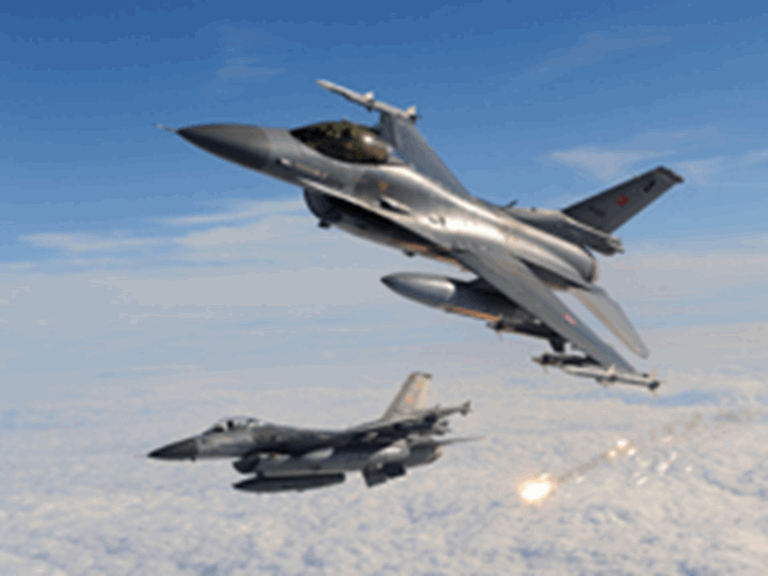 |
Air Force Command which fulfills its main duties by executing various activities and functions both at peace and at war, after being reestablished during the Republic period by following the path that ATATÜRK has shown, entered into an intense working period in order to rise to the level of contemporary world aviation and to take an effective part on the country’s protection and starting from this period reached to the high level and the strength it has today with great efforts and labor. In addition, in order to maintain the provided developments and progress, in other words, to be able to keep up with this age, which is called the science age, there have been large scaled reestablishments in different periods both in organizational level and in various services, actions and systems and this has been a continuous process.
In order to publicize the Turkish Air Force both in the country and abroad, and to develop the relationships with the public to raise interest, the Acroteam Squadron’s call up name was determined to be the Turkish Stars and this call up name was published on 11 January 1993. On 18 June 1993 which was the closing day for the Air Force Command’s shooting competitions, The Turkish Stars Acroteam performed their first demonstration in Mürted Airfield Command (formerly known as the 4th Main Jet Base) in Kahramankazan, Ankara with NF-5 A/B aircraft.
Except for the civilians, Turkish Air Force personnel wear blue colored uniforms. Up until 1961, different types of eagle figures were used as the symbol for Turkish Air Force, but since 1961, one headed “Selçuklu Eagle” figure is being used as a theme instead of other eagle figures used before. For the 20th Anniversary of the Turkish Stars in 2012 the aircraft design was updated to reflect the supersonic speed and modernity together with the colors of the Turkish Flag.
On 25 November 2009, Air Force Command initiated the efforts for “Single F-16 Aircraft Demonstration Flight” program and on 14 January 2010 three demonstration pilots were chosen to form the team and the program was put to life. On 18 May 2010 the first training sortie for the Single F-16 Aircraft Demonstration Flight was performed. Trainings were executed by the other two demonstration pilots flying at the back cockpit as observers.
On 1 September 2020, which is the beginning of the 2010-2011 Flight Training Year, the first demonstration flight was presented to the Air Force Commander at Mürted Airfield Command (formerly known as the 4th Main Jet Base) in Kahramankazan, Ankara. Out of the 300 recommendations sent by the Air Force personnel for the name of the demonstration team “SOLOTÜRK” was chosen. On 15 April 2011 the first official demonstration flight was performed in front of the President and distinguished guests.
14 April 2025 Monday
Participation In The 40th Space Symposium11 April 2025 Friday
Aeromedical Research and Training Center09 April 2025 Wednesday
Combatant Air Force Commander General İsmail GÜNEYKAYA participated in the NATO Air Force Chiefs' Symposium07 April 2025 Monday
Exercise Red Flag-2025/226 March 2025 Wednesday

